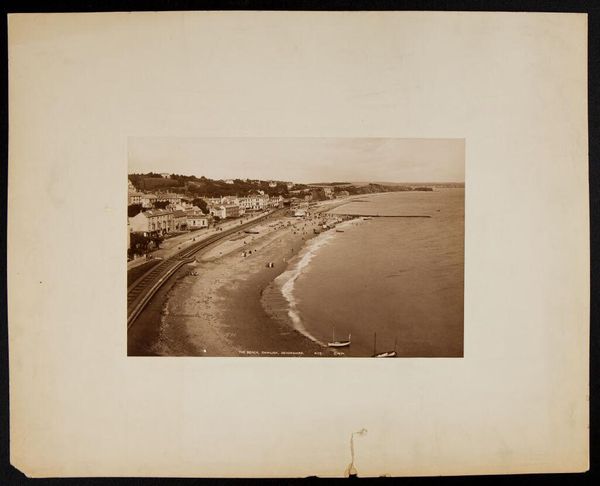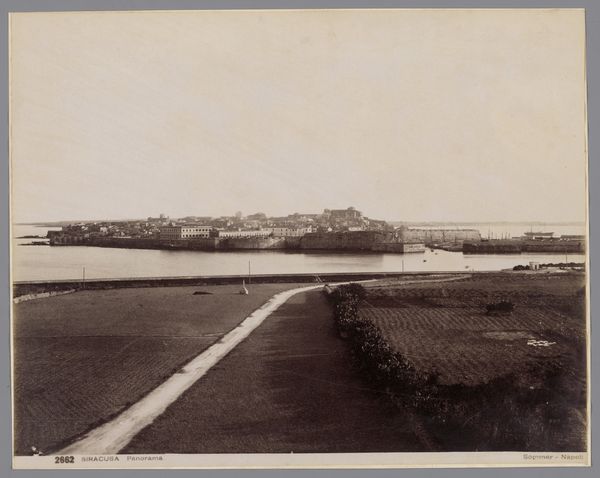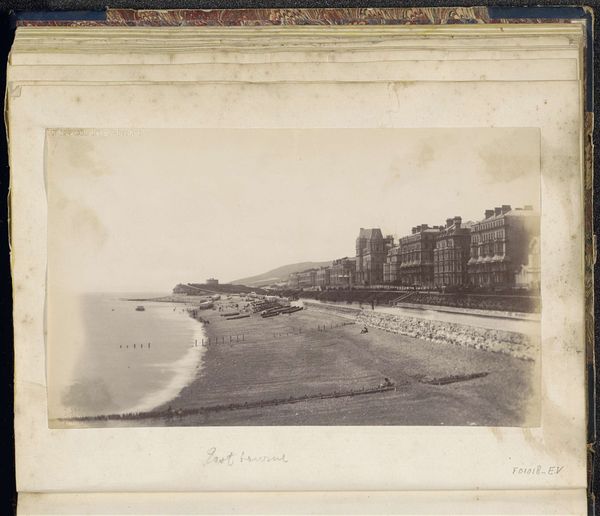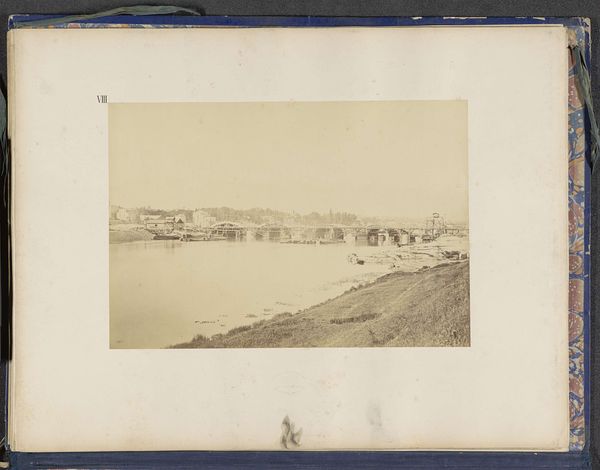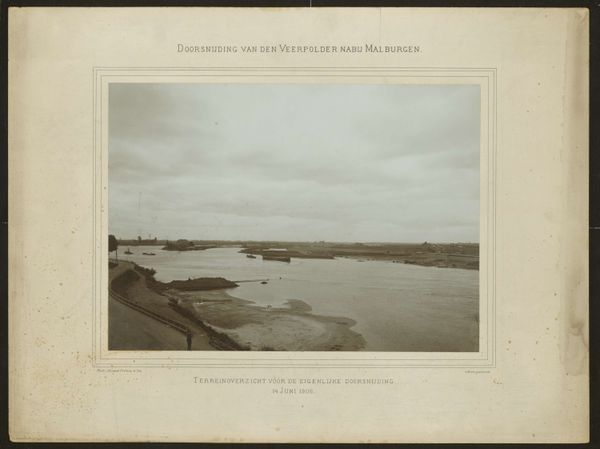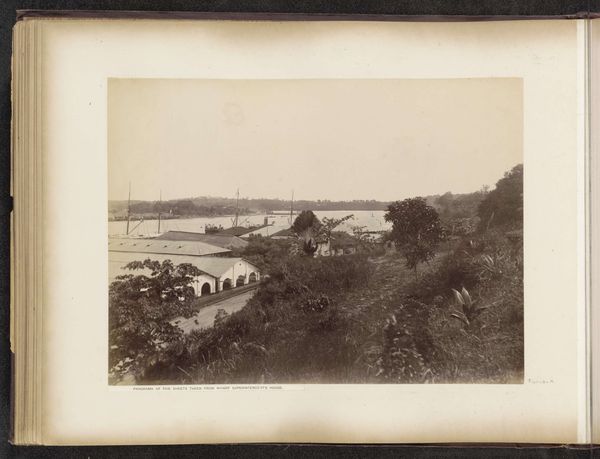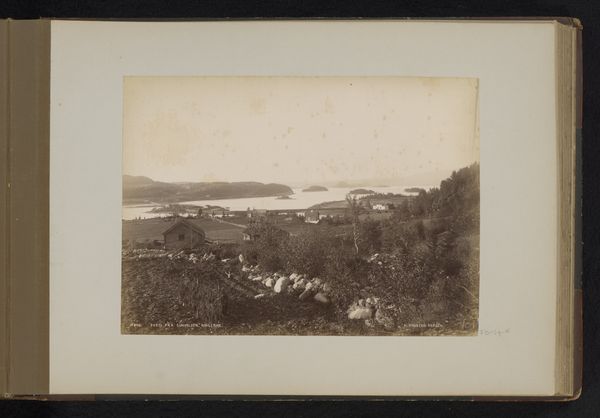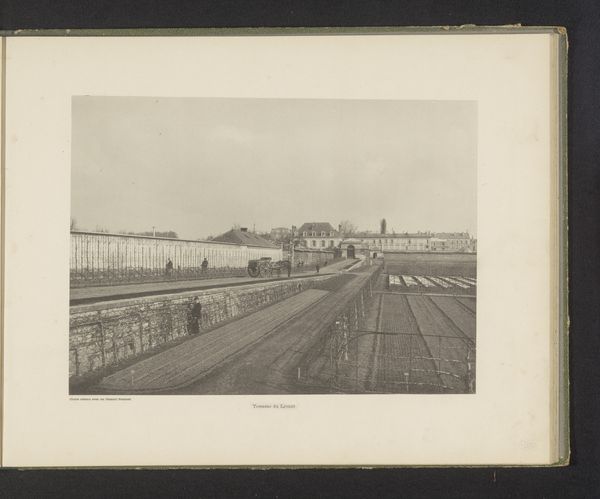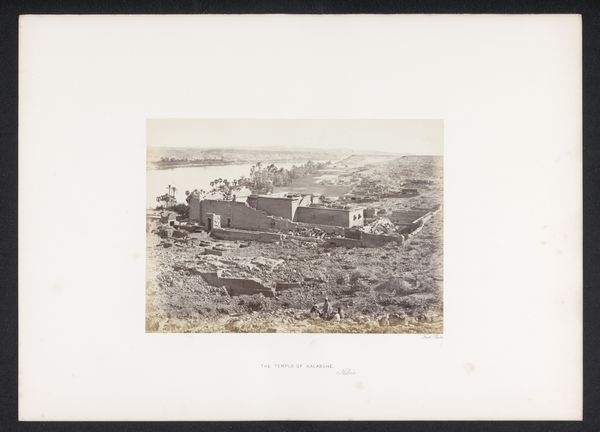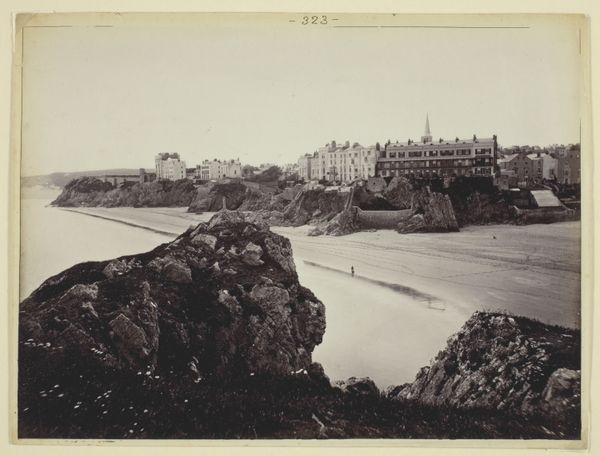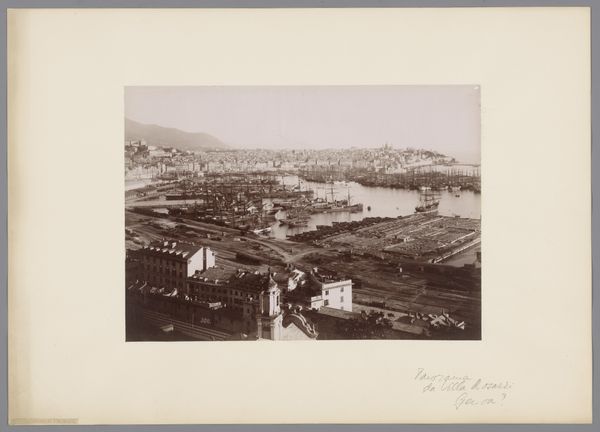
Dimensions: height 215 mm, width 268 mm
Copyright: Rijks Museum: Open Domain
Curator: From around 1883 to 1888, M.P. Warner captured this stunning albumen print, "Holyoke Dam, from east side of river". It's a fascinating record of a time when industrial innovation was reshaping the American landscape. Editor: It has such an interesting dichotomy, the raw, churning power of nature tamed—or at least channeled—by human ingenuity. All depicted with such delicate gradations of light. Curator: Exactly, Warner really embodies that luminist impulse. The long exposure softens the water's flow into this milky cascade. The focus is on creating this very particular kind of sublime feeling when facing modernization. Editor: I see something ancient here. The relentless rush of water reminds me of the cyclical nature of time, of renewal. Even though the dam itself is a modern creation, it somehow echoes primeval forces. And I am intrigued by how close and far the artist got in the same shot, offering depth, scale, and access, all in one image. Curator: Yes, the perspective places us as both observers and participants in this industrial drama. Holyoke, Massachusetts was at the time one of the largest paper-producing centers in the world. The dam, completed in 1849, represented ambition and faith in the power of technology. But even then, the engineering did not go without critics, with some environmental and aesthetic concerns voiced from its opening. Editor: You know, dams always struck me as such potent symbols—control, constraint, but also the potential for tremendous energy release. Looking at it now, this photograph transcends its documentary purpose. It speaks to the complex relationship we have always had with the natural world and technological advancement. Curator: Absolutely. The image prompts a conversation about societal values, economic development, and the environmental consequences that accompanied industrialization, as a sort of warning sign, that went largely unheeded. Editor: Seeing how powerfully this photograph resonates across time makes me understand the appeal of enduring symbols and how they mirror our hopes and anxieties across history. It definitely makes one question if, by pursuing power, something of significance might be destroyed or, perhaps, overlooked.
Comments
No comments
Be the first to comment and join the conversation on the ultimate creative platform.
